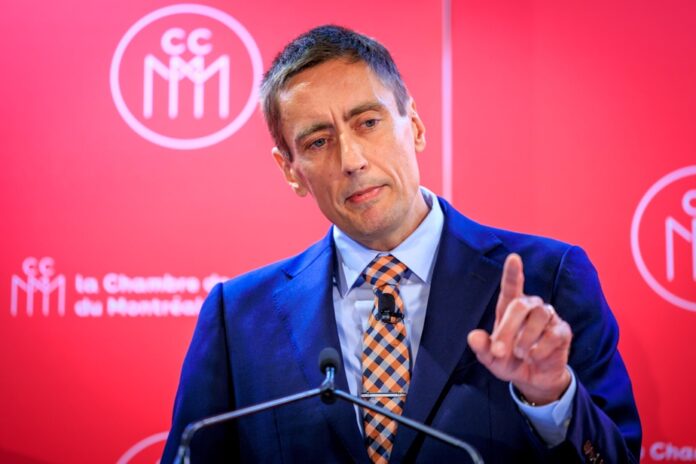If inflation is falling less quickly than expected, it is because businesses took advantage of the pandemic context to increase their prices more often and more substantially than they could do before, according to the Deputy Governor of the Bank of Canada, Nicolas Vincent.
This reaction from businesses, here and abroad, is closely linked to high inflation and could help keep prices high for longer, the deputy governor explained Tuesday to an audience well chosen to convey this kind of message, that of the Chamber of Commerce of Metropolitan Montreal.
Normally, companies don’t change their prices often “because it’s a long and expensive process,” he said. They need to assess costs, but also demand for their product and competitive prices, before deciding on a new price and communicating it. “All of this costs a lot more in terms of resources than just changing the listed price,” he said. “And often, the game is not worth the effort. »
Things have changed. Surveys conducted by the Bank of Canada show that during the post-pandemic recovery, businesses found their costs increased, but demand for their products remained high. As the offer was limited, they also indicated that their customers were less reluctant than usual to pay more.
“Faced with this new reality, companies reacted with stronger and more frequent increases than usual,” summarizes Nicolas Vincent. Since the start of the year, companies’ pricing practices seem to be returning to normal, but “it must be admitted that progress remains limited”, which could partly explain the resistance of inflation, according to him.
The Bank of Canada estimates that corporate profit margins have been “fairly stable” since the start of the year, indicating that price increases have closely followed cost increases, but also that companies have not suffered from inflation. “It is the consumers who collect the bill,” summarized the deputy governor.
“It now remains to be seen whether recent reductions in the costs of certain inputs will be passed on to prices as quickly and fully as the increases of the last two years,” he said.
The Bank of Canada believes there is a risk that companies will continue to adjust their prices more frequently and more substantially, particularly in the food sector where technology reduces the cost of price changes. “The electronic labels you see at the grocery store make it possible to change prices more often at a lower cost,” explained the deputy governor.
The reduction in competition, particularly in food, is another area of concern for the Bank of Canada. “The consolidation of certain sectors could reduce the competitive pressures which limit price increases,” reiterated Nicolas Vincent.
The first non-executive deputy governor appointed by the Bank of Canada to provide a fresh look at monetary policy believes that central banks must demonstrate humility.
“Our models have limits and we have to make choices,” he said to explain that inflation was not temporary as had been believed and that it was falling less quickly than expected, despite the repeated increases in the key rate.
The Bank of Canada is drawing lessons from recent months, which are forcing it to review its models, according to him.
But there is no question of raising the inflation target from 2% to 3% because achieving the objective is proving difficult, said Nicolas Vincent in response to questions from the President of the Chamber, Michel Leblanc .
“The 2% target has served people very well for decades. If we stop at 3%, the next inflationary shock will take us to 4%, then to 5%, he illustrated. Afterwards, we can ask ourselves, do we stop at 4%? »
Repeated interest rate hikes help fuel inflation by increasing mortgage costs, he agreed, but the inflation rate has still fallen from 8% to 4%. “What we have to ask ourselves is what inflation would be if we had not increased rates,” he explained.





